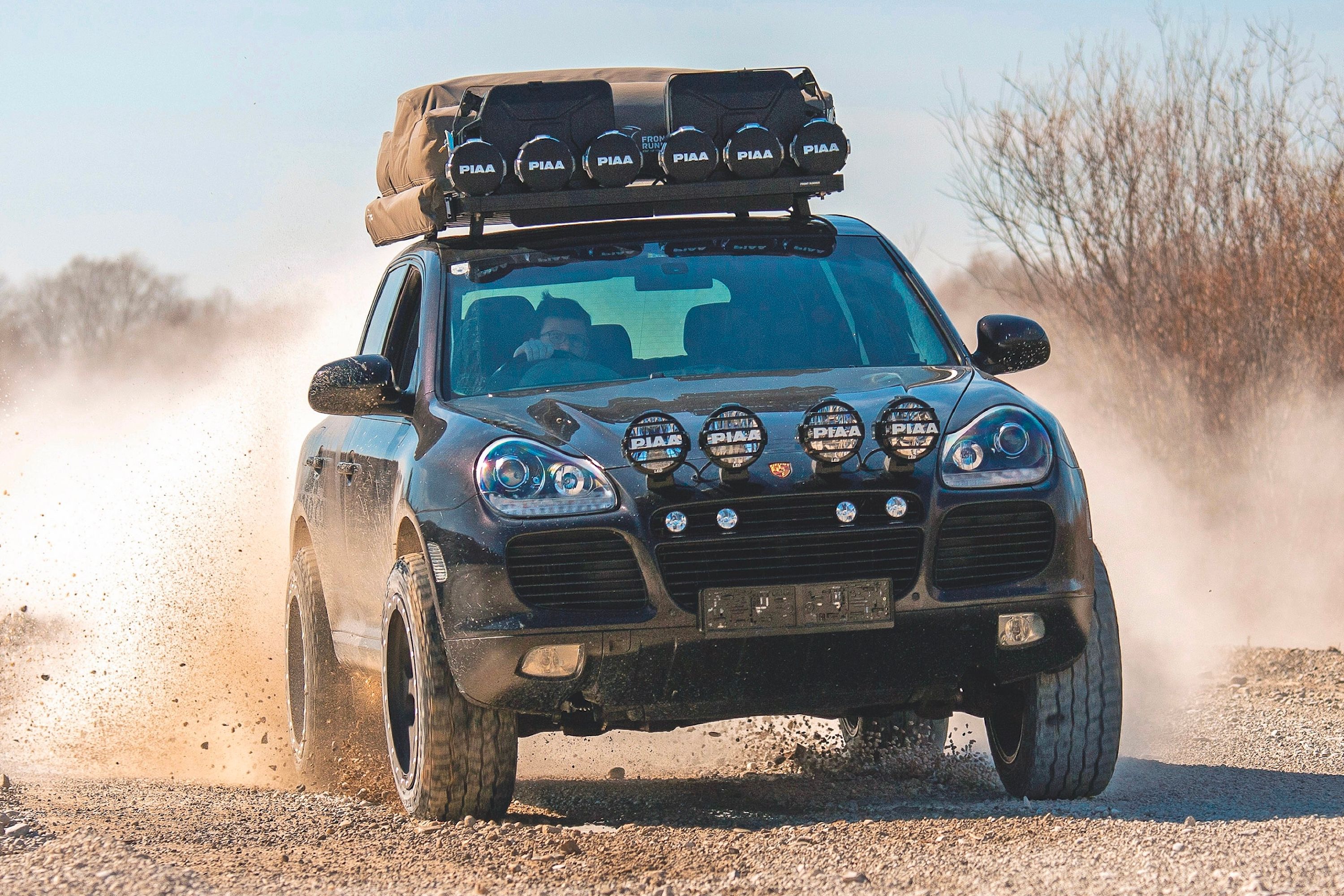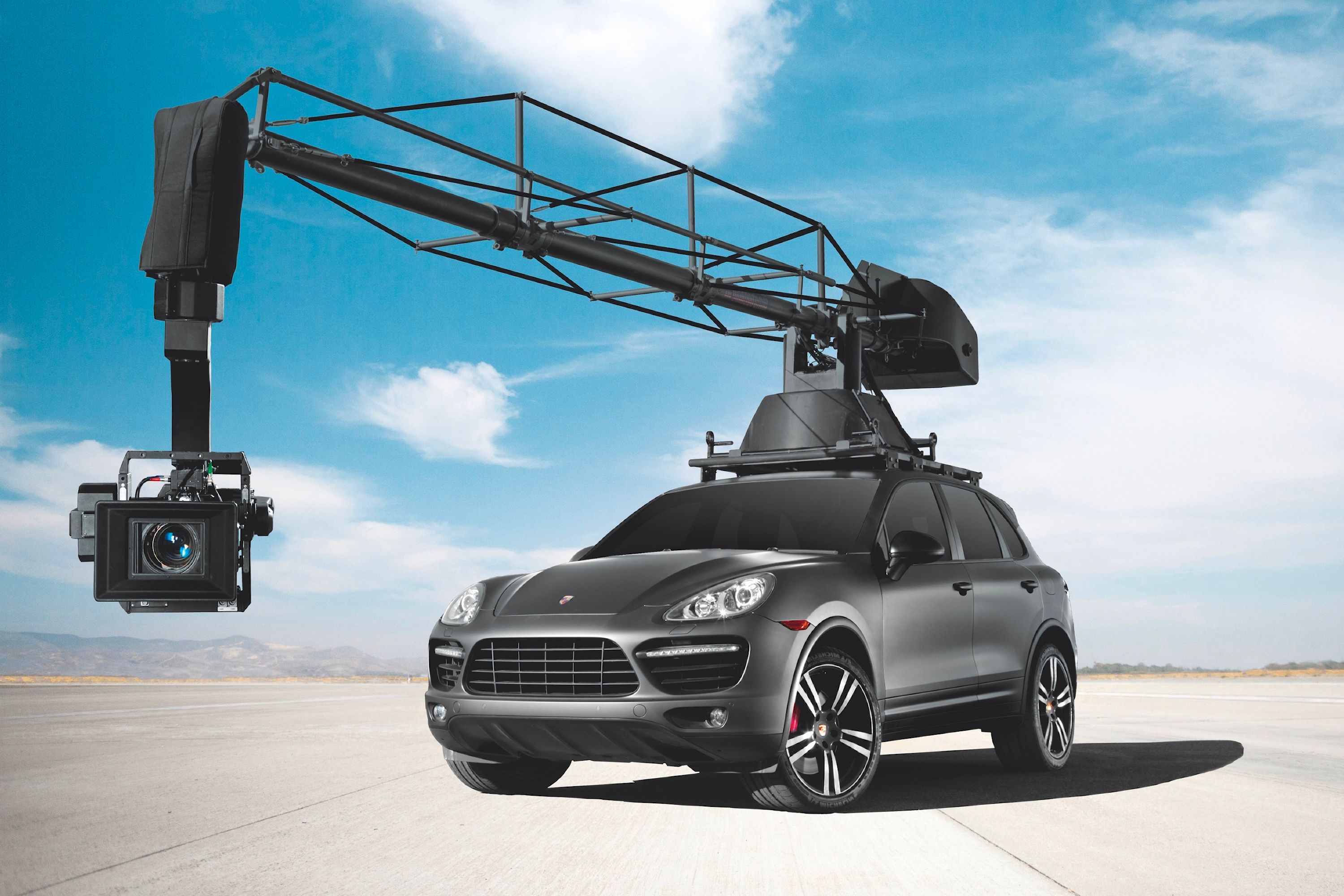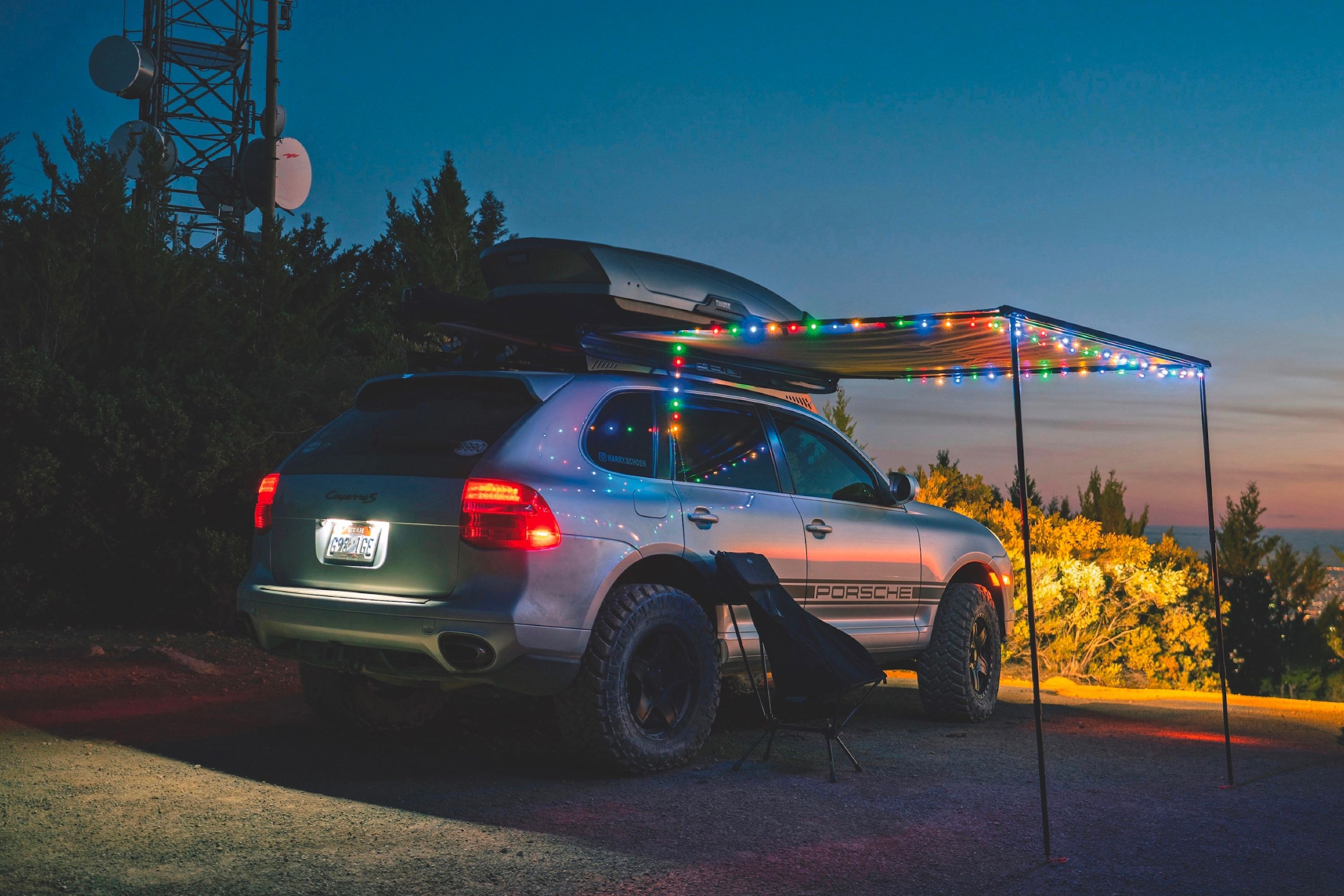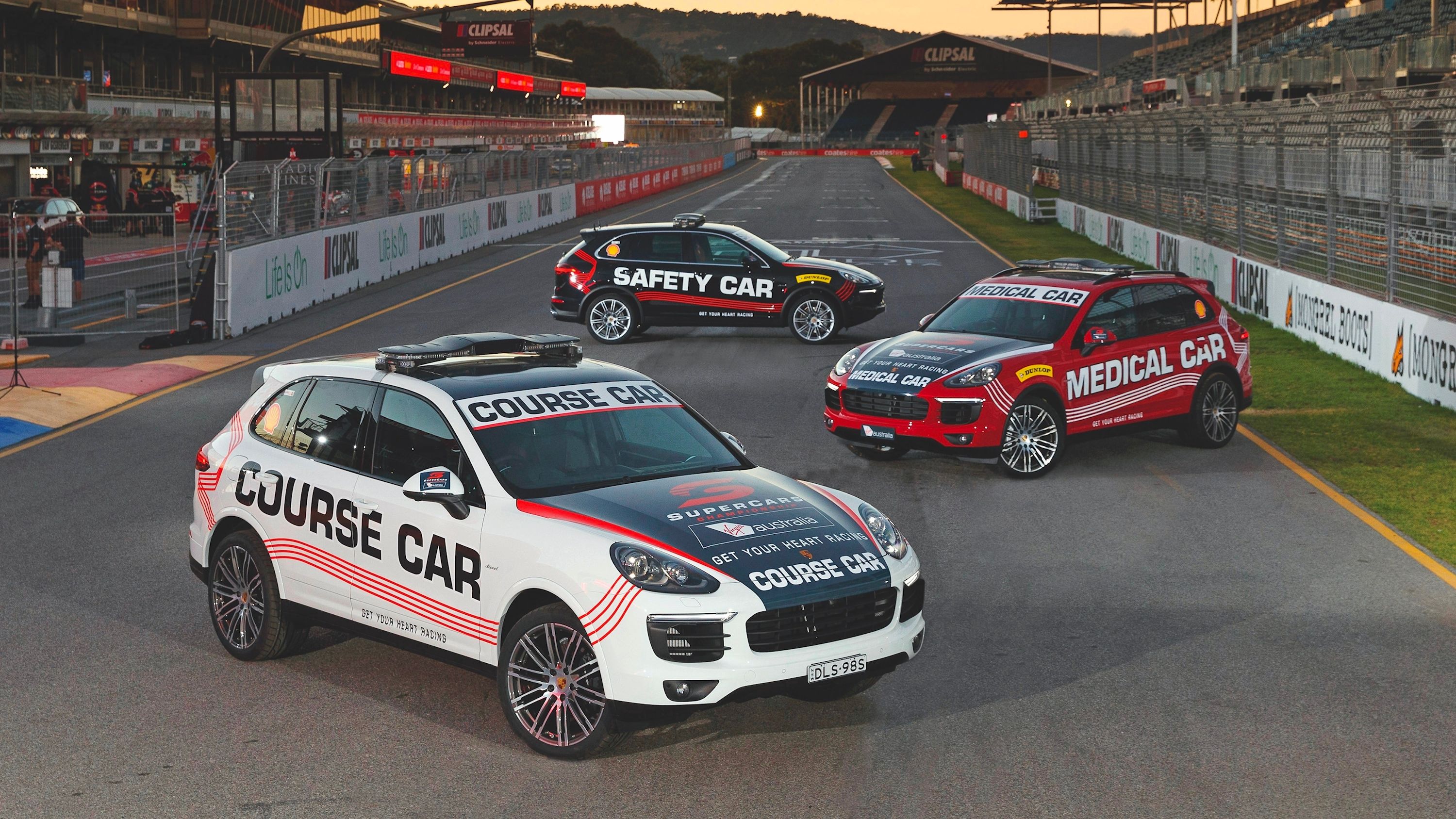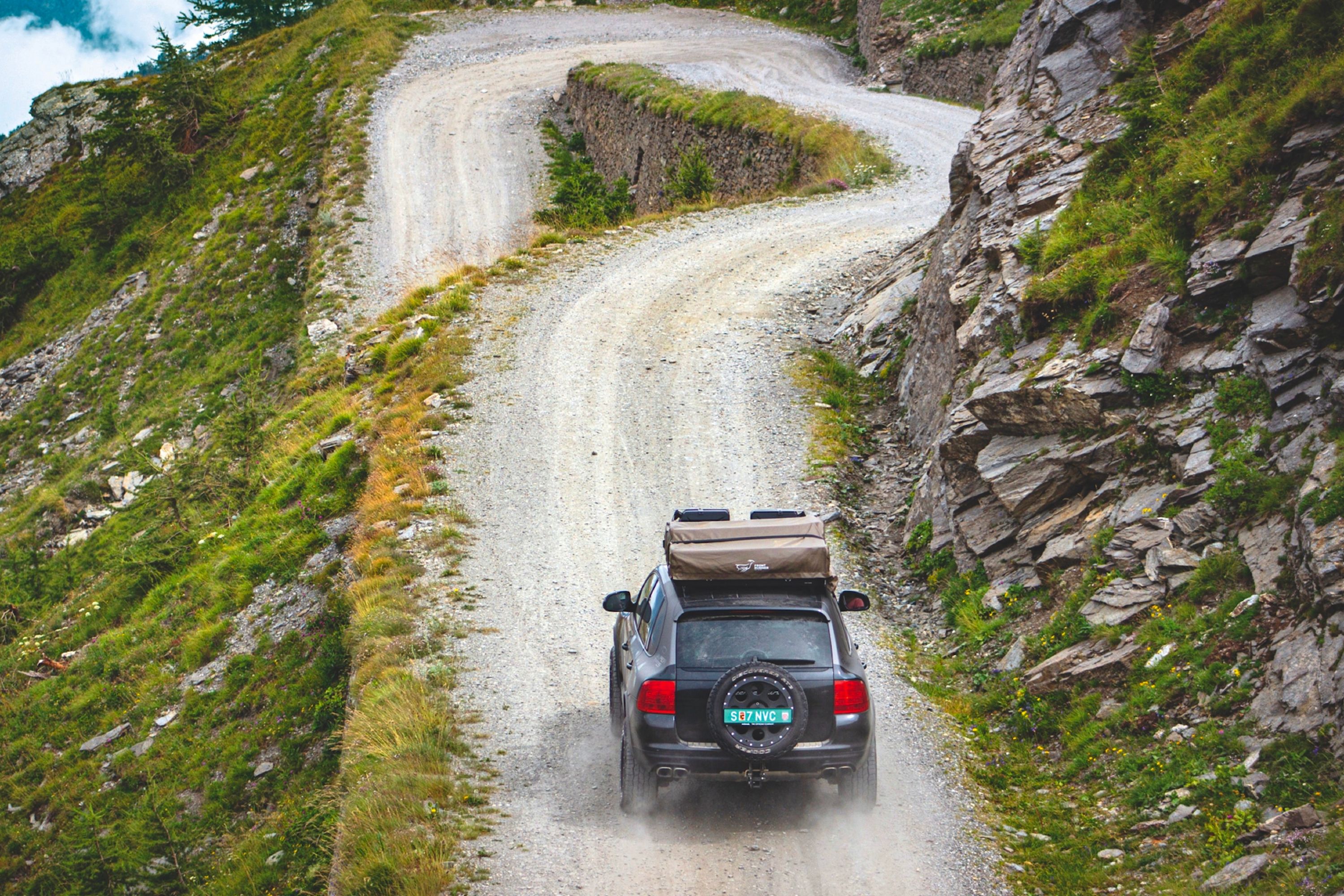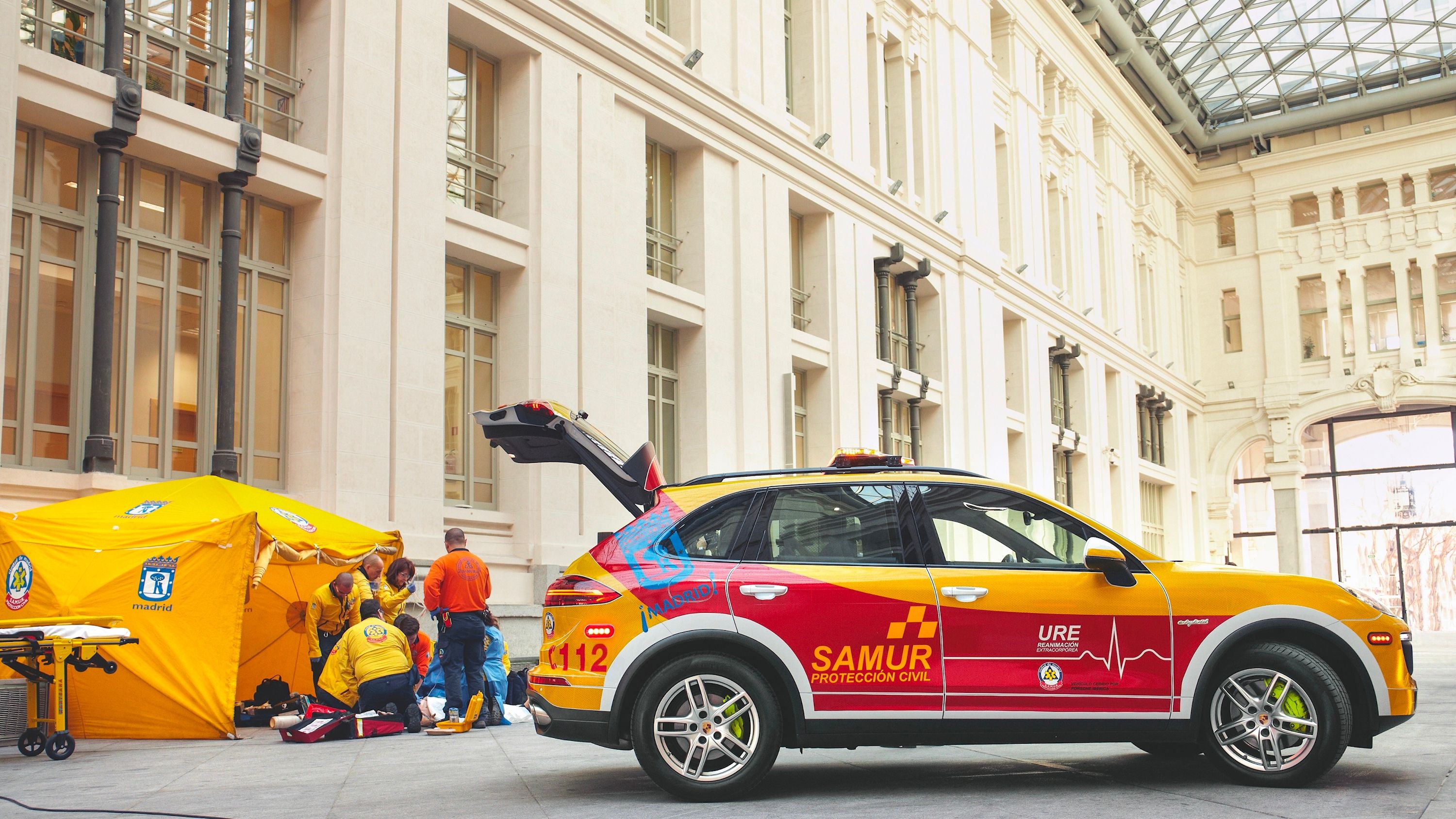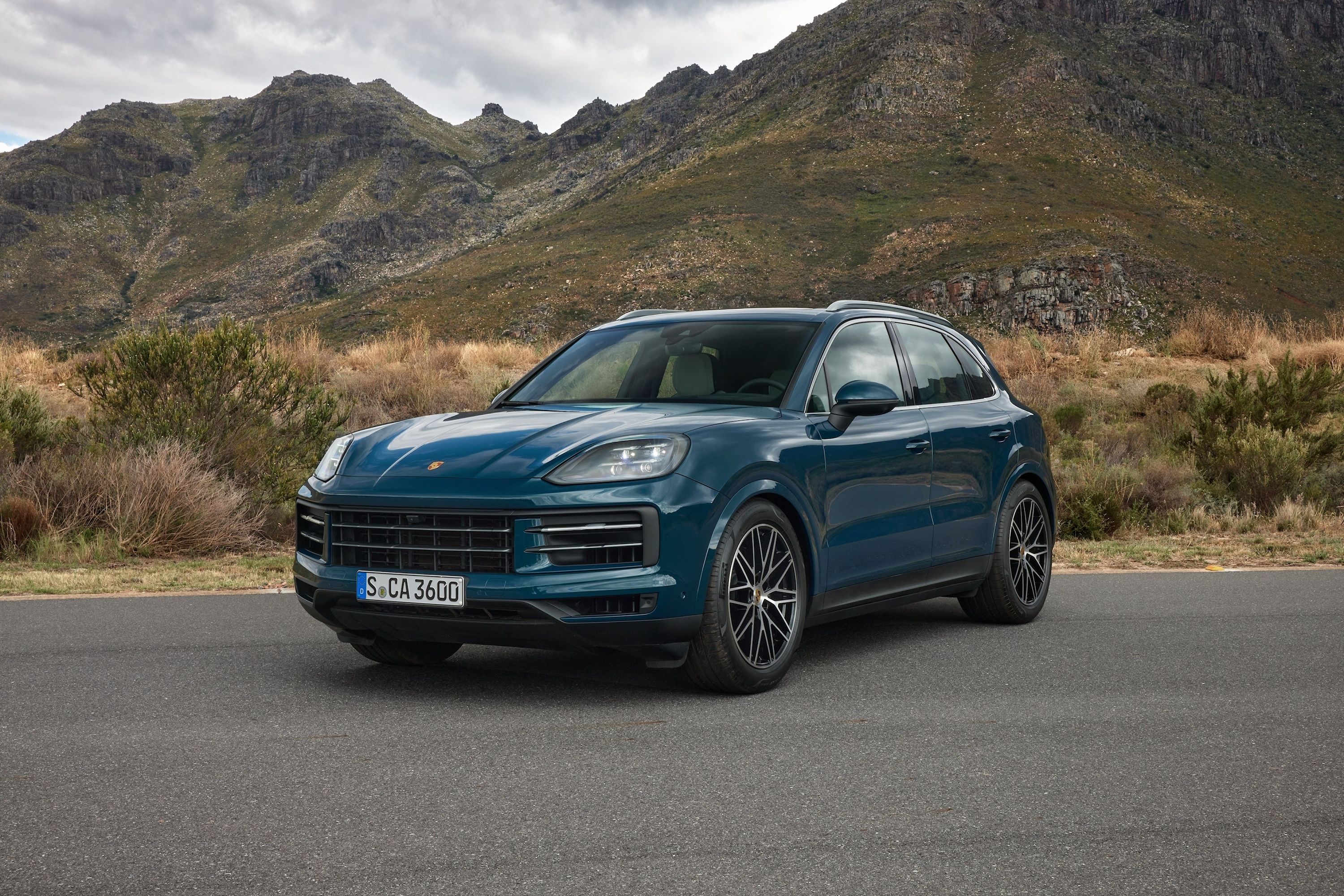
Unless you've been living under a rock, you'll know that the Porsche Cayenne is turning 20 this year. Not yet old enough to order a beer, but old enough to have established a rock-solid reputation for being the Swiss Army Knife in the Porsche range.
The first-generation Cayenne was arguably over-engineered on the off-road side, and Porsche dialed it back slightly for the second and third generations. Still, dropping the low-range transfer case was wise, as the Cayenne remained more than capable enough for its target audience. We drove a second-gen Cayenne across Namibia, and if it can handle that, it's more than good enough for the suburbs in the USA.
The Cayenne's practicality did not go unnoticed, and it has been used for several odd jobs over the years. Porsche recently shared five famous uses for the Cayenne, spanning the first and second-gen cars.
Camera Car
If you know anything about film history, you'll know what a Russian Arm is. If not, it's a sort of crane-like device bolted to the top of a car, built to film action sequences. Anatoliy Kokush designed it in the 1980s, but the modern version is roughly 23 feet long, and the 360-degree rotating camera is stabilized electronically to compensate for any vibrations. The Russian Arm has made it much easier to film modern action movies, and it's a mainstay of any film with a car in it.
In earlier years, the arm was mounted to the top of the Mercedes-Benz M-Class. In later years, fast Audi wagons became the preferred vehicle of choice, but nowadays, it's the Cayenne. The model you see here is a 2014 Cayenne Turbo with a 176-pound rig on the roof.
The Cayenne handles beautifully, but using a Russian Arm requires a strong bond between the driver and rig operator. Rig operators are known for using the arm's weight to give the car more traction during high-speed sequences simply by transferring weight to where it's needed.
Camper
As first-generation Cayennes have become cheaper, we've seen them converted into some spectacular off-roading rigs.
Harrison Schoen took it to another level after he retired from the US Navy. Being used to confined spaces and never staying in one place for too long, Schoen converted a 2008 Cayenne into a camper. "I came to realize how short life is," explains Schoen. "And if I have the opportunity to keep moving and make a living along the way, I should do it."
Schoen completed his build in 2021 and has been sleeping in his car since. He's on a mission to visit every national park in the USA.
The modifications to this model include a three-inch lift kit, 18-inch wheels with all-terrain tires, a roof box, a canopy with disco lighting, and a plank bed inside.
Safety Car
Porsche Australia provided three 2017 Cayennes with diesel engines for the Australian Supercars Championship to prove that a tall SUV could handle like a sports car.
These cars served as safety, medical, and course cars. Not only did it promote the Cayenne's handling prowess, but also the grunt of the 4.2-liter V8 turbocharged diesel engine. It was an impressive engine, but the infamous Dieselgate saga ended the VW Group's investment in diesel, and most of the world lost faith in oil burners.
Safari Car
South African Shane Oosthuizen purchased a 2004 Cayenne Turbo and planned to drive it all the way from Austria to South Africa. The pandemic ended the plan; instead, Oosthuizen and his wife drove across Europe and eventually shipped the car to South Africa.
The car has covered over 65,000 tough miles, including trips to Lesotho and Botswana.
Modifications to this model include increased ground clearance for the all-terrain tires, a roof rack with an additional 40-liter tank, a roof tent, a pull-out awning, a 12-volt refrigerator, and a digital sound system.
Ambulance
The Servicio de Asistencia Municipal de Urgencia y Rescate (SAMUR) emergency service in Madrid decided to go green with a 2015 Cayenne S E-Hybrid. We're all for decreasing your environmental footprint, but ambulances are required to be fast. Thankfully, the Cayenne remained fast and agile, even though Porsche loaded it with EV bits.
This particular Cayenne can carry extracorporeal membrane oxygenation (ECMO) equipment thanks to the large body. It's the stuff that keeps someone who has had a heart attack alive. Porsche donated this car to prove that it could get to hear attack victims quickly, and it keeps on doing so to this day.

